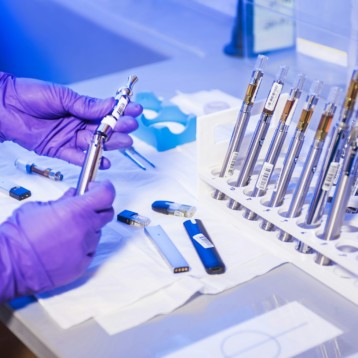|
People suffering from head or neck cancer are usually treated with the traditional methods of chemotherapy and radiotherapy. As a side effect of these treatments, these patients often suffer from a pain in their mouth. This pain, known as oral mucosidis, varies from a bearable pain to a pain so strong that the patient can barely open his or her mouth and is fed through a tube. The heat-capturing camera is designed to help in predicting which patient is likely to develop severe mucosidis.
The camera’s developers, along with Ezra Cohen, an Oncologist from University of Chicago who will be in charge of the clinical aspect of the development, observed that in patients who suffer from severe mucosidis the area surrounding the tumor is warm after the first treatment. The infrared camera is capable of detecting a temperature change of even one twentieth of a degree Celsius. Using this high resolution imaging, the team was able to detect changes in the temperature around the tumor. The scientists hypothesize that the warmth in the area surrounding the tumor indicates a beginning of an inflammation that is likely to affect the mouth and cause mucosidis.
The early detection can help the medical staff make better decisions regarding the intensity of the treatment. However, in some cases, the method of treatment can not be changed and this unpleasant side effect can not be avoided. In these cases, the main advantage of the early detection is that there is a chance to mentally prepare the patient for the mucosidis. According to patients affected by this pain, mental preparations can help deal with this side effect, which is sometimes worse than the chemotherapy itself.
The infrared camera has been tried on six patients and is now pending the approval of the FDA for further clinical trials on another 34 patients. Valentyn Novosad and Volodymyr Yefremenko of the Argonne National Laboratory, along with their colleagues from the University of Chicago, will be trying to make better predictions of the risk of mucosidis according to the heat image generated by the camera.
TFOT has recently covered several other non-invasive devices that can help detect cancer using different characteristics of cancer cells. These include the T-rays detector developed by the U.S. Department of Energy’s Argonne National Laboratory, a ‘lab on a chip’ designed to detect oral cancer, which was developed at the Texas University, and the nanocytometer chip developed at the University of California, Berkeley for locating cancer cells in the blood stream.
More information about the heat-imaging camera can be found in the Argonne National Laboratory news page.












